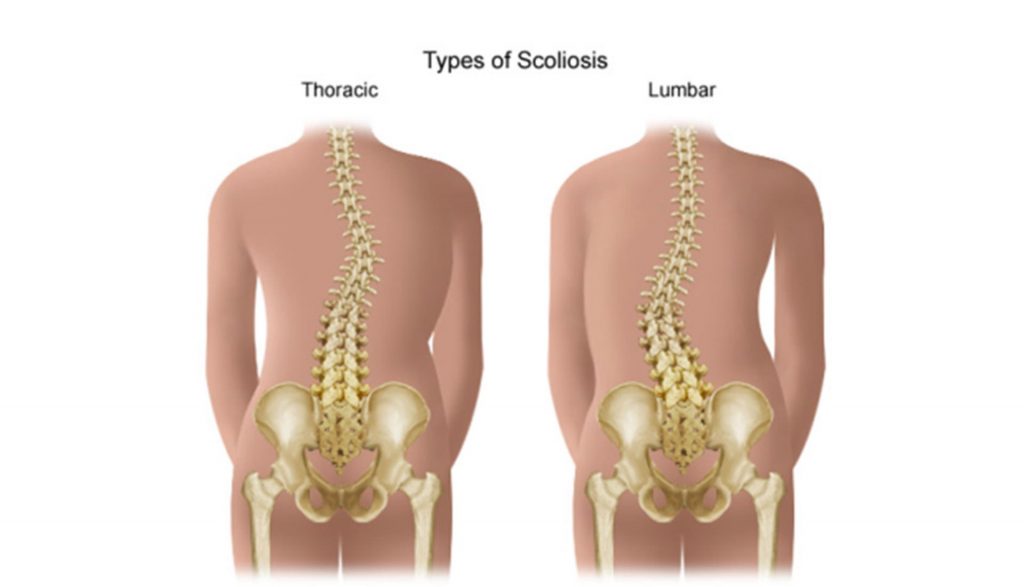Home Exercises for Scoliosis – Thoracic Scoliosis, Lumbar Scoliosis, Relation between Back Pain & Scoliosis
If your shoulders seem lopsided or your clothes hang unevenly, it may be poor posture — or it could be Scoliosis.
An abnormal curvature of the spine (scoliosis) can affect overall posture, muscle strength, and flexibility, leading to pain and reduced function.
Scoliosis is characterised by an S- or C-shaped curve in the spine. It’s generally seen in childhood, but it can also come about in adulthood.

Scoliosis in adults can occur due to a variety of reasons, including genetics, uneven pelvic position, past spinal or joint surgeries, knee or foot distortions, or even head injuries.
Some curves are more severe than others. In moderate to severe cases, scoliosis may be corrected through bracing and/or surgery. If you suspect scoliosis, you should consult your doctor about an appropriate treatment plan.
The goal of exercises for scoliosis is to improve muscle strength and flexibility to increase your ability to perform activities of daily living, reduce pain, and even allow you to breathe easier.
Click this link to watch some videos with Simple Home Programmes for Back Pain!!
The difference between a typical spine and that of a person with scoliosis, is that the former can move from side to side. For instance, when you walk, your spine bends and rotates left and right, ultimately reverting back to the centre. People with scoliosis have a difficult time moving in one direction due to the curvature of their spine.
Mild scoliosis will usually not require significant medical attention and is not as visible to the eye as other posture disorders.
Mild scoliosis is generally the term used to describe scoliosis where the Cobb angle, or curvature of the spine, is less than 20 degrees. Mild scoliosis is the most responsive to exercise treatment.
Moderate scoliosis may be treated with exercise, but wearing a medically prescribed brace is sometimes recommended as well. Moderate scoliosis may develop into severe scoliosis, defined as a spine curvature between 40 and 45 degrees.
Severe scoliosis usually needs to be corrected with spinal surgery

Mild scoliosis is often managed simply with exercise, medical observation, scoliosis-specific physical therapy.
Moderate scoliosis often involves bracing to stop the spine from curving further. Depending on the curvature of the spine, your doctor might recommend increased medical observation or other treatment methods.
Once the spine reaches a certain advanced curvature, and once the person with scoliosis reaches a certain age, surgery becomes the most recommended treatment option. Surgery to correct scoliosis can take several forms and depends on a variety of factors, including:
The following exercises may not necessarily be targeted toward your specific scoliosis diagnosis, but they are a good starting point to get you moving. Sometimes, these general strength and conditioning techniques are enough to reduce symptoms of mild scoliosis.
Exercise is being recommended more and more as a treatment for mild to moderate scoliosis. By being proactive and performing these exercises, you may be able to slow the curvature of your spine and decrease the pain you feel as a result of your scoliosis.
It’s important to always get the opinion of your orthopaedist or physical therapist before beginning a scoliosis treatment regimen, even one that involves simple exercises. This ensures that you won’t be harming your skeletal system by performing these exercises.
© All Rights Reserved OSR Sportsworks Consulting LLP